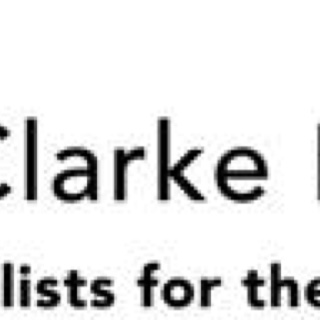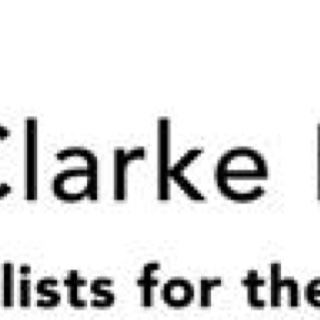Information
-
Month/Document No.
-
Audit Title
-
Client / Site
-
Conducted on
-
Prepared by
-
Elevation assessed & works completed.
-
Location
-
Personnel
Rules of WIR and Progress Reporting 1. All reports need to be in for the dates that have been agreed on the reporting timetable. If there are any reports missing the reporting manager (AS) needs to make contact with the contracts manager (JHL), finding out why reports are missing and getting confirmation when they will be in. Everybody needs to remember that there is a maximum of three working days over date of when the report needs to be in. It is not an option for reports not be done after three days. 2. Generally, there should be reports prepared for each elevation, where all assessed levels are listed. Each single report may include more than one elevation. However, it must be clearly described in the introduction which facades have been examined and what works have been completed during the assessment. 3. When job is being handed over to the project manager/contracts manager, the Reporting manager must prepare a construction plan drawing of the project, number each elevation and then refer to these numbers when conducting Work Inspections. 4. Construction plan layout drawings with numbered elevations must be saved onto the M Clarkes reporting folder on the Network. Jobs/Projects/Quality. 5. Each report should include in the introduction (cover page of report) description of the assessed façade (assigned number) along with the description of type of works which were completed as assessed façade (assigned number) along with description of type of works which were completed and assessed by project manager. 6. We have issued standard detail drawings reference numbers D01, D02, D03, D04, D05 and so on. These are available in "M Clarkes Guidance Booklet” and need to be referred to throughout WIR and clearly show what is required. 7. The report with error/failure marked RED, must be saved on the system. The next report that will follow must show how the error was rectified. If improvement was not possible, eg: due to soft ground/lack of access, it needs to be described/explained. The answers column still needs to be highlighted red. However, if the error was rectified the section should be changed to green. The comment section is to be used for explanations of how and when error was rectified. 8. If project manager has found an error during the assessment, it must be noted and fixed before consecutive stages of works progresses, eg: CP board cannot start before Metsec sub frame is properly fixed. Quality Control Manager cannot accept the next WIR report until everything is fixed and up to date on the previous report. This is to make sure that all errors are corrected, and there are no error omissions. 9. Progress reports need to be genuine and relevant. 10. It is important that progress reports always have delay events. 11. All reports have to be sent to main contractor and subcontractor.
Application Guidance: EpsiCoat Mineral Render PLUS – Application Guide [masonry substrate with insulation] 1. The substrate must be brushed down to remove any friable material, algae or lichen and fungicidal wash applied where necessary. 2. The insulation boards will require bedding to the substrate using Styrofix Bedding Adhesive on high rise applications or to level the boards on an uneven substrate. For wet fix applications, stabilising solution may be required to help improve adhesion and offer uniform suction. Please contact the Wetherby Technical Department for further advice on adhesively fixing insulation boards. 3. Attach base rails, full system stop beads and trims. Install all beads and trims using approved Wetherby fixings at a maximum of 300mm centres and 50mm from each end. 4. Place first insulation board onto base rail and secure with approved Wetherby mechanical fixings at a rate of 8 – 9 fixings per m² in accordance with Wetherby fixing pattern. Continue with additional boards ensuring that a staggered laying pattern is adhered to. All boards must be interleaved at external corners. Joints should be tightly butted to eliminate thermal breaks and there should be no joints in boards at window or door openings. 5. Where the insulation boards butt up against dissimilar materials, Wetherby Sealing Tape should be affixed to the adjacent surface and the boards fitted tight against the seal to allow full compression of the tape. 6. Cut through the insulation board using a level to mirror existing structural movement joints where required. Ensure 2 fixings per board are installed either side of the movement joint. Install surface stop beads as required. 7. Mix the Styrobond-M Scrim Adhesive (using water volume as specified on the rear of the bag) to a pliable consistency and trowel apply initial coat to insulation boards at a thickness of 4-6mm. 8. Bed in alkali resistant reinforcing mesh into top third of scrim adhesive, ensuring a minimum overlap of 75mm is achieved. Ensure all PVC wings of beading are overlapped with scrim cloth. Mesh should be kept taught and fixed from the top down. There should be no overlaps within 150mm of any reveal or corner. 9. Apply additional stress patches using 200mm x 300mm off-cuts of mesh positioned at 45° to window and door openings. 10. Bed meshed corner beads into the basecoat, to external corners and around openings as required. 11. When scrim adhesive is dry, apply a secondary tight levelling coat at 2-4mm to the entire wall surface to ensure that the mesh is fully covered. Smooth to a flat surface using a damp dry lining sponge (or similar) and allow to dry fully before applying EpsiCoat Primer. 12. Using a roller, apply a generous coat of EpsiCoat Primer ensuring a full coverage and allow to dry. 13. Thoroughly mix the EpsiCoat Mineral Render PLUS texture to a uniform consistency, using a clean, rust-free low speed mixer. Add between 4.25 and 4.50 litres of clean water per bag, depending on working temperatures – if unsure, please contact the Wetherby Technical Department for further advice. Water consumption rates must be closely adhered to in order to ensure colour consistency and estimated setting times. When mixing, powder should always be added to water to ensure a homogenous mix. Do not re-temper. Apply in a continuous motion always working towards a wet edge. Rub over texture with a plastic trowel in a circular motion to seal the texture and provide the desired consistent finish. NB: EpsiCoat Mineral Render PLUS is a quick setting product and will start to set hard within 2 hours. Please take care to only mix the required amount for specific elevations and completely utilise the render within a realistic time frame.
-
Elevation assessed & works completed.
-
Completed by Subcontractors:
-
Add media
A. Pre-start checks.
-
1. Are conditions, access safe?<br>
-
Add media
-
2. Are materials properly stored?
-
Add media
-
3. Is substrate dry , clean and free from defects.?
-
Signed of by Project Manager.
E. Insulated render
-
1. Has the applicator been given all detail drawings, levels, locations of fire breaks and location of expansion beads.?
-
Add media
-
2. Has the applicator got information of what way the adhesive is applied to boards (dabs, grated trowel or picture frame)?<br>
-
Add media
-
3. Has the applicator been given manufacturer specification with regard to the pattern of mechanical fixings?<br>
-
Add media
-
4. Have all down pipes, vents, grounds, brackets, Cills and cappings etc. been installed on the wall and properly sealed?<br>
-
Add media
-
5. Are permanent cappings on, if not in place, are there temporary cappings on?<br>
-
Add media
-
6. Has the wall been checked for straightness before mesh applied?<br>
-
Add media
-
7. Have all door frames and window frames been over lapped by insulation at minimum of 10mm in order to ensure a good sealing?<br>
-
Add media
-
8. Are down pipes on.?<br>
-
Add media
-
9. Has mesh been overlapped properly at mesh joints.?<br>
-
Add media
-
10. Have additional mesh reinforcement been added to four corners of the openings?<br>
-
Add media
-
11. Were insulation boards additionally fixed to the substrate with proper number of mechanical fixings( as per design/manufacturer specification)?<br>
-
Add media
-
12. Have two numbers of base coat been applied and sponged?<br>
-
Add media
-
13. Has all protection been done.?<br>
-
Add media
F. Final coat.
-
14. Was specified primer applied to the surface of the reveals and walls?<br>
-
Add media
-
15. Have colours of the final coat been confirmed ? Were drawings checked so as to make sure that proper colour of final coat has been applied?<br><br>
-
Add media
-
16. Was final coat applied during suitable weather condition as specified by the manufacturer.?<br>
-
Add media
-
17. Is the texture and colour of render consistent?<br>
-
Add media
-
18. Were curing conditions maintained?<br>
-
Add media
Inspection results:
-
Add media
-
Signed off by the project manager?
-
Signed off by the main contractor representative:
F. Post installation checks.
-
19. Were elements adjoined to render including: trims, sills, construction joints, opening frames, soffits, cappings etc. secured from dirt of adhesive, paints and top coat?<br>
-
Add media
-
20. Has plant used. E.g. Cherry Pickers, scissor lifts been cleaned? Is plant ready for off hiring ? Have containers and tool boxes been emptied and checked for damages before making request of off-hire?<br>
-
Add media
-
21. Has adequate protection been used?<br>
-
Add media
-
22. Are electric boxes and other elements incorporated into facade cleaned out?<br>
-
Add media
-
23. Has work area been left clean on completion?<br>
-
Add media
-
signed by main contractor representative.
-
signed by project/contract manager.








